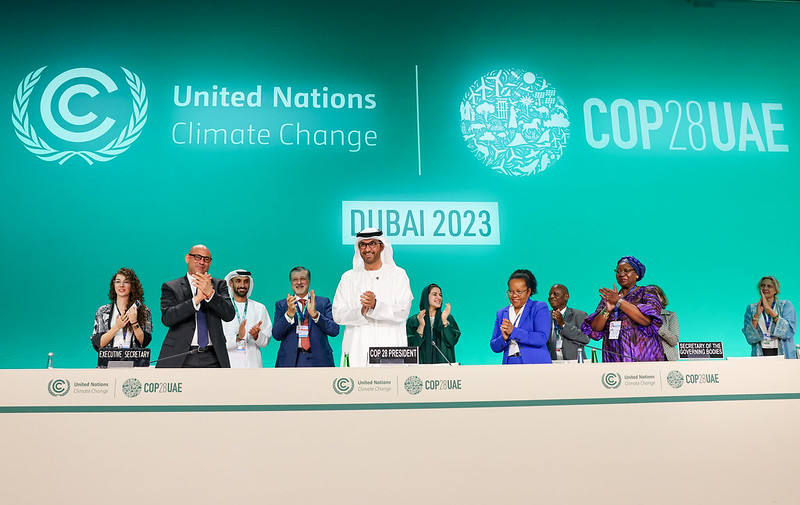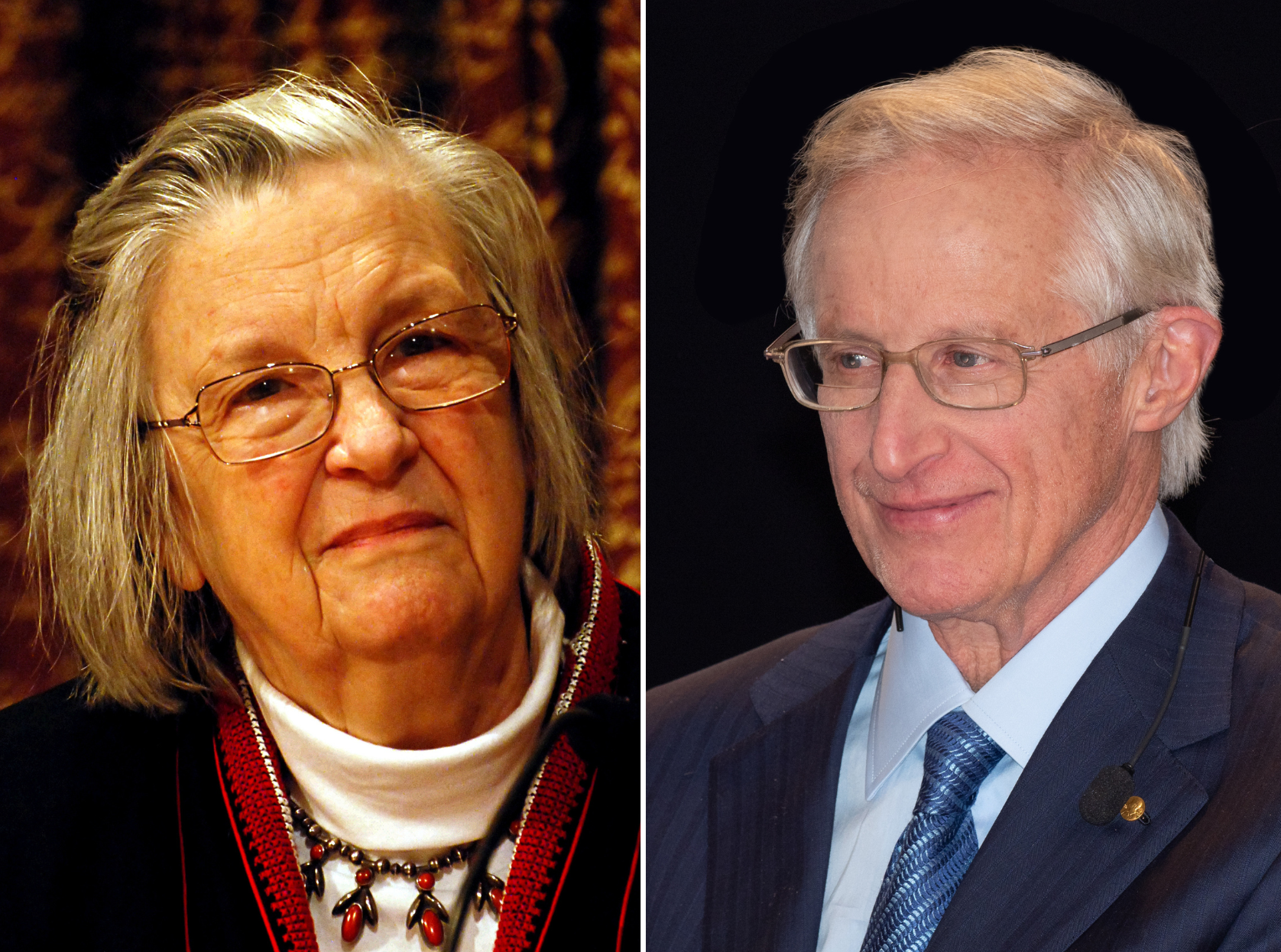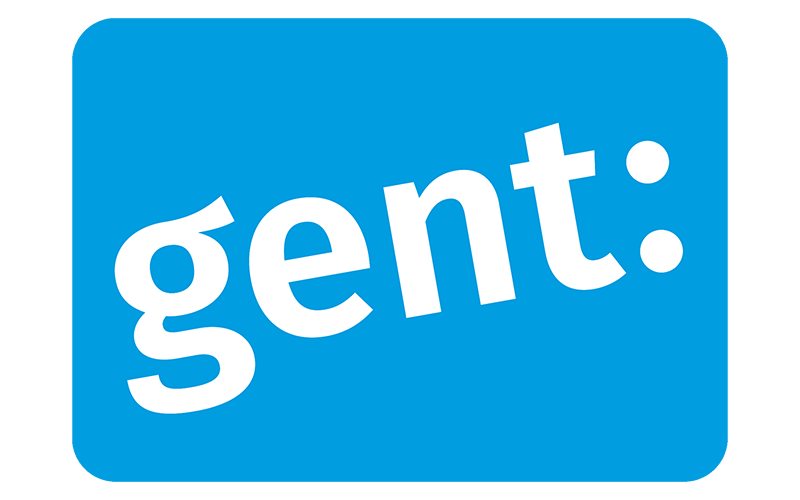Kan enkel dwang het klimaat redden?
Berlijn, Kyoto, Montreal, Nairobi, Kopenhagen, Parijs, Dubai... Wereldleiders verlieten elk van de 28 steden waar ooit een VN-Klimaatconventie plaatsvond zonder bindend akkoord. Dat terwijl de EU op haar eentje haar handelspartners wél tot ambitieuzer klimaatbeleid dwingt.
 Als je lid wil worden van een tennisclub moet je, tenzij je Williams of Federer heet, vast lidgeld betalen. Daardoor krijg je toegang tot de tennisterreinen. Mensen van een andere tennisclub moeten doorgaans betalen om een uurtje te komen tennissen op het terrein van jouw club. Klinkt eerlijk? Absoluut, toch werkt tot 2026 de toegang tot de Europese consumptiemarkt volledig anders. Het emissiehandelssysteem zorgt er namelijk voor dat EU-producenten emissierechten moeten aankopen per ton CO2 die ze uitstoten. Geïmporteerde producten van buiten de EU krijgen echter toegang zonder enige koolstofheffing. Dat is alsof je als lid wel lidgeld moet betalen, maar niet-leden gratis mogen komen tennissen.
Als je lid wil worden van een tennisclub moet je, tenzij je Williams of Federer heet, vast lidgeld betalen. Daardoor krijg je toegang tot de tennisterreinen. Mensen van een andere tennisclub moeten doorgaans betalen om een uurtje te komen tennissen op het terrein van jouw club. Klinkt eerlijk? Absoluut, toch werkt tot 2026 de toegang tot de Europese consumptiemarkt volledig anders. Het emissiehandelssysteem zorgt er namelijk voor dat EU-producenten emissierechten moeten aankopen per ton CO2 die ze uitstoten. Geïmporteerde producten van buiten de EU krijgen echter toegang zonder enige koolstofheffing. Dat is alsof je als lid wel lidgeld moet betalen, maar niet-leden gratis mogen komen tennissen.
Aan die scheeftrekking komt in 2026 een einde, want dan treedt het Europees mechanisme voor koolstofgrenscorrectie in werking. De impact van dit systeem, beter gekend als het Carbon Border Adjustment Mechanism (CBAM), op het klimaatbeleid van derde landen was het onderwerp van mijn onderzoek.
Naar een CBAM-club
Ondertussen weet u dat producenten in de Europese Unie in tal van sectoren moeten betalen om CO2 te mogen uitstoten, maar dat producten uit derde landen onbelast blijven. Daardoor treedt koolstoflekkage op. Dat betekent dat CO2-producerende industrie zich verplaatst naar landen met minder klimaatmaatregelen. Zo daalt de wereldwijde broeikasgasuitstoot uiteraard minder of niet. Om dit ongewenste effect te vermijden en de eigen competitiviteit te waarborgen zal CBAM de emissies van importproducten met behulp van emissiecertificaten belasten. De prijs van deze certificaten is gekoppeld aan de prijs van de emissierechten van het reeds bestaande emissiehandelssysteem. Een eventuele koolstofheffing in het land van herkomst wordt in mindering gebracht van deze prijs. Voorlopig moeten deze certificaten enkel ingediend worden voor aluminium, cement, elektriciteit, ijzer en staal, en meststoffen.
 Met CBAM creëert de EU een systeem dat gelijkaardig is aan de klimaatclub van Nobelprijswinnaar William Nordhaus. Hij zag in dat internationale klimaatakkoorden, zonder bindende kracht, niet ambitieuzer zijn dan wanneer staten elk hun eigen ding doen. Geïnspireerd door alweer een Nobelprijswinnares, Elinor Ostrom, ontwikkelde Nordhaus daarop de klimaatclub. Lid zijn van deze club houdt in dat je met behulp van een overeengestemde koolstofprijs je uitstoot verlaagt én niet-leden bestraft met handelssancties. De klimaatclub moedigt landen dus met de wortel en stok aan om nieuw klimaatbeleid te voeren. De wortel stelt toegang voor tot interne markt én de bescherming van de eigen industrie tegen minder klimaatbewuste buitenlandse concurrenten, terwijl de koolstofheffing de stok is die de slagen uitdeelt.
Met CBAM creëert de EU een systeem dat gelijkaardig is aan de klimaatclub van Nobelprijswinnaar William Nordhaus. Hij zag in dat internationale klimaatakkoorden, zonder bindende kracht, niet ambitieuzer zijn dan wanneer staten elk hun eigen ding doen. Geïnspireerd door alweer een Nobelprijswinnares, Elinor Ostrom, ontwikkelde Nordhaus daarop de klimaatclub. Lid zijn van deze club houdt in dat je met behulp van een overeengestemde koolstofprijs je uitstoot verlaagt én niet-leden bestraft met handelssancties. De klimaatclub moedigt landen dus met de wortel en stok aan om nieuw klimaatbeleid te voeren. De wortel stelt toegang voor tot interne markt én de bescherming van de eigen industrie tegen minder klimaatbewuste buitenlandse concurrenten, terwijl de koolstofheffing de stok is die de slagen uitdeelt.
Al Capone & Al Gore
Om de impact van CBAM op het klimaatbeleid van derde landen na te gaan selecteerde ik vijf casussen met behulp van twee voorwaarden: een grote CO2-producent zijn én veel van de betrokken goederen naar de EU exporteren. Ik selecteerde Canada, China, India, Turkije en de VS. De baptist-bootlegger coalitie onderbouwt mijn onderzoek. Deze theorie gaat terug op Al Capone. Toen pleitten baptisten in de VS voor een verbod op alcoholverkoop. Daarvan zouden alcoholsmokkelaars (bootleggers) zoals Al Capone natuurlijk rijk worden. Er ontstond een vreemde coalitie. De smokkelaars konden politici overtuigen tot het opleggen van alcoholbeperkingen. Politici konden dit dankzij de baptisten verantwoorden.
De klimaatbewuste Amerikaanse voormalige vicepresident Al Gore zal waarschijnlijk tevreden zijn dat dit fenomeen zich ook voordoet tussen industrie en klimaatbewegingen. Dat was bijvoorbeeld het geval bij het Montreal Protocol dat in 1987 cfk’s verbood, omwille van hun impact op het gat in de ozonlaag. Bij klimaatverandering zou het als volgt werken. Stel dat een land een sterke klimaatbeweging heeft en de bevolking ook strengere regels wil, dan zullen meer binnenlandse klimaatmaatregelen volgen. Daarvan wil de binnenlandse industrie een internationalisering om geen competitief nadeel te lopen. Zo ontstaat ook hier een coalitie tussen de industrie en de klimaatbewegingen.
Werkt de wortel en/of de stok?
CBAM werd in het leven geroepen om koolstoflekkage te vermijden. Toch zou het als klimaatclub andere landen kunnen aansporen om nieuw klimaatbeleid te voeren. Al bestaat er scepticisme over de afdwingingsmacht van de EU, omdat haar interne markt niet belangrijk genoeg zou zijn. Daarom testte ik twee hypotheses uit.
Enerzijds ging ik na of de attractiviteit van CBAM landen met een baptist-bootlegger coalitie motiveert nieuw klimaatbeleid te overwegen. En inderdaad, Canada overweegt sinds CBAM zelf een koolstofgrenscorrectiemechanisme in te voeren. De Canadese baptist-bootlegger coalitie achtervolgt dus de wortel die hen voorgehouden wordt. Ook de Verenigde Staten zijn eerder wortel-eters. Meerdere wetsvoorstellen werden ingediend om koolstofgrenscorrecties in te voeren, al dan niet gekoppeld aan de invoering van een binnenlandse koolstofprijs.
Anderzijds verwachtte ik dat het afstraffingsmechanisme van CBAM landen zonder baptist-bootlegger coalitie nieuw klimaatbeleid doet overwegen of geen actie doet ondernemen. Dat laatste geldt voor China. De Chinese klimaatbeweging staat er onvoldoende sterk. Bovendien zijn ze weinig kwetsbaar voor CBAM, waardoor hun reactie beperkt bleef tot diplomatieke commentaar. In landen zonder sterke klimaatbeweging die wél kwetsbaar zijn was de situatie helemaal anders. India en Turkije onderzoeken sinds CBAM de invoering van een koolstofprijs. Hiertoe worden ze gedwongen om het geld dat voor de aankoop van CBAM-certificaten naar de EU zou vloeien bij te kunnen houden. Turkije duidt zelfs heel expliciet de stok van CBAM aan als oorzaak. Ze vermelden namelijk expliciet dat hun koolstofprijs compatibel moet zijn met CBAM.
Dwingende samenwerking
CBAM verandert dus de incentives, waardoor landen nieuw klimaatbeleid overwegen. De nieuwe Europese Commissie wil bovendien extra inzetten op de competitiviteit van de Europese industrie. Daardoor is de kans groot dat CBAM uitgebreid zal worden én er zo wereldwijd nog meer koolstofprijzen zullen verschijnen. Een eenzijdige maatregel zou er dus paradoxaal genoeg voor kunnen zorgen dat wereldleiders wél serieus gaan samenwerken. En dat is nodig om de globale koolstofprijs te ontwikkelen die klimaatverandering een halt kan toeroepen.
Bibliografie
Aldy, J. E., & Stavins, R. N. (2012). Using the Market to Address Climate Change: Insights from Theory & Experience. Daedalus, 141(2), 45-60. https://doi.org/10.1162/DAED_a_00145
BASIC countries. (2021, 8 oktober). Joint Statement issued at the conclusion of the 30th BASIC Ministerial Meeting on Climate Change hosted by India on 8th April 2021 https://english.mee.gov.cn/News_service/news_release/202104/P020210420346484492808.pdf
Baykan, B. G. (2019). What did the Turkish climate movement learn from a global policy failure? Frame shift after the Copenhagen Climate Summit. Turkish Studies, 20(4), 637-655. https://doi.org/10.1080/14683849.2019.1601563
Bermingham, F. (2023, 6 juni). China berates EU at World Trade Organization for policies it calls unfair. South China Morning Post. https://www.scmp.com/news/china/article/3223047/china-berates-eu-world-trade-organization-policies-it-calls-unfair
Bertram, G. (2016). William Nordhaus' climate club proposal: thinking globally about climate change economics. Policy Quarterly, 12(2), 23-29. https://doi.org/10.26686/pq.v12i2.4597
Black, S., Minnett, D. N., Parry, I. W. H., Roaf, J., & Zhunussova, K. (2022). Framework for Comparing Climate Mitigation Policies Across Countries. (Working Paper No. 2022/254). Washington, DC: Internationaal Monetair Fonds, Departement Fiscale Zaken Geraadpleegd via https://www.imf.org/en/Publications/WP/Issues/2022/12/16/A-Framework-for-Comparing-Climate-Mitigation-Policies-Across-Countries-527049
Blinken, A. J., State Department (2021, 19 februari). The United States Officially Rejoins the Paris Agreement [Persbericht] https://www.state.gov/the-united-states-officially-rejoins-the-paris-agreement/
Böning, J., Di Nino, V., & Folger, T. (2023). Benefits and costs of the ETS in the EU, a lesson learned for the CBAM design. (ECB Working Paper No. 2023/2764). Frankfurt: European Central Bank https://doi.org/10.2139/ssrn.4335984
Bradford, A. (2015a). The Brussels Effect. Northwestern University Law Review,, 107(1), 1-68. https://scholarlycommons.law.northwestern.edu/nulr/vol107/iss1/1
Bradford, A. (2015b). Exporting standards: The externalization of the EU's regulatory power via markets. International Review of Law and Economics, 42, 158-173. https://doi.org/10.1016/j.irle.2014.09.004
Bradford, A. (2016). The EU as a regulatory power. In M.Leonard (Red.), Connectivity wars: why migration, finance and trade are the geo-economic battlegrounds of the future (pp. 133–140). European Council on Foreign Relations. http://www.jstor.org/stable/resrep21667.20
Buck, S. Y., Bruce (2002). Bootleggers, Baptists, and the Global Warming Battle. Harvard Environmental Law Review, 26, 177-229.
Cadell, C. (2019, 27 november). China says CO2 border tax will damage global climate change fight. Reuters. https://www.reuters.com/article/idUSKBN1Y105O/
Canada pulls out of Kyoto protocol. (2011, 13 december). The Guardian. https://www.theguardian.com/environment/2011/dec/13/canada-pulls-out-kyoto-protocol
Cervi, G. V. (2022). Why and How Does the EU Rule Global Digital Policy: an Empirical Analysis of EU Regulatory Influence in Data Protection Laws. Digital Society, 1(2), 18. https://doi.org/10.1007/s44206-022-00005-3
Chaudhary, A. (2021, 29 juni). India Will Oppose ‘Unfair’ Carbon Border Tax Plans at COP26. Bloomberg. https://www.bloomberg.com/news/articles/2021-06-29/india-will-oppose-unfair-carbon-border-tax-plans-at-cop26
Climate Action Tracker. (z.d., april 2024). Countries - Find your country https://climateactiontracker.org/countries
Climate Watch. (z.d.). Historical GHG Emissions World Resources Institute. https://www.climatewatchdata.org/ghg-emissions
Cutting, M. (2023). The risk of Carbon Border Adjustment Mechanisms. Australian Energy Council. https://www.energycouncil.com.au/analysis/the-risk-of-carbon-border-adjustment-mechanisms/
Damro, C. (2012). Market power Europe. Journal of European Public Policy, 19(5), 682-699. https://doi.org/10.1080/13501763.2011.646779
database.earth. (z.d.). Global Population. https://database.earth/population
Davis, C. L. (2023). Discriminatory Clubs: The Geopolitics of International Organizations. Princeton University Press.
De Bièvre, D. (2021). Internationale samenwerking ter verhindering van globale opwarming: waarom is dat zo moeilijk? In S. Vicca & A. Crabbé (Eds.), Van klimaatverandering naar systeemverandering. ASP Academic and Scientific Publishers.
Del Bello, L. (2022, 18 oktober). India gets ready to launch a national carbon market. Energy Monitor. https://www.energymonitor.ai/carbon-markets/india-gets-ready-to-launch-a-national-carbon-market/
Deniz Altinay, A., & Kohen Benbanaste, G. (2023, 13 november). Climate Law On Its Way In Türkiye. Mondaq. https://www.mondaq.com/turkey/climate-change/1388384/climate-law-on-its-way-in-t%C3%BCrkiye
Department of Resource Conservation and Environmental Protection. (2021a). Action plan for carbon dioxide peaking before 2030. National Development and Reform Commission (NDRC) People's Republic of China. https://en.ndrc.gov.cn/policies/202110/t20211027_1301020.html
Department of Resource Conservation and Environmental Protection. (2021b). Working Guidance for Carbon Dioxide Peaking and Carbon Neutrality in Full and Faithful Implementation of the New Development Philosophy. National Development and Reform Commission (NRDC) People's Republic of China, Geraadpleegd via https://en.ndrc.gov.cn/policies/202110/t20211024_1300725.html
Dobson, S., Winter, J., & Boyd, B. (2019). The greenhouse gas emissions coverage of carbon pricing instruments for Canadian provinces. The School of Public Policy Publications, 12. https://doi.org/doi.org/10.11575/sppp.v12i0.53155
Dür, A. (2010). Protection for exporters: Power and discrimination in transatlantic trade relations, 1930–2010. Cornell University Press. http://www.jstor.org/stable/10.7591/j.ctt7z719
Eaton, E., Olive, A., & Carter, A. (2020, 17 juni). Why the real climate change fight is in Saskatchewan. Policy Options Politiques. https://policyoptions.irpp.org/magazines/june-2020/why-the-real-climate-change-fight-is-in-saskatchewan/
Epurescu, V. (2021, 10-11 juni). Carbon Border Adjustment Mechanism and the Protection of the Competitiveness of EU Aluminium Producers. International Conference on Economics and Social Sciences [Resilience and economic intelligence through digitalization and big data analytics]. 4th International Conference on Economics and Social Sciences, Bucharest University of Economic Studies. https://doi.org/10.2478/9788366675704-006
EUR-Lex. (z.d., 24 februari 2022). Division of competences within the European Union. https://eur-lex.europa.eu/EN/legal-content/summary/division-of-competences-within-the-european-union.html
Europees Parlement. (2024, 20 april 2024). Revision of the EU emission trading system (ETS) In “A European Green Deal”. https://www.europarl.europa.eu/legislative-train/theme-a-european-green-deal/file-revision-of-the-eu-emission-trading-system-(ets)
Europese Commissie. (2019). Mededeling (COM/2019/640) van de Commissie aan het Europees Parlement, de Europese Raad, de Raad, het Europees Economisch en Sociaal Comité en het Comité van de Regio's - De Europese Green Deal. Brussel Geraadpleegd via https://eur-lex.europa.eu/legal-content/NL/TXT/?uri=COM%3A2019%3A640%3AFIN
Europese Commissie. (2021a). Communication (COM/2021/550) from the Commission to the European Parliament, the Council, the European Economic and Social Committee and the Committee of the Regions 'Fit for 55': delivering the EU's 2030 Climate Target on the way to climate neutrality. Brussel Geraadpleegd via https://eur-lex.europa.eu/legal-content/EN/TXT/?uri=COM%3A2021%3A550%3AFIN
Europese Commissie. (2021b). Joint EU-US Statement on a Global Arrangement on Sustainable Steel and Aluminium [Persbericht] https://ec.europa.eu/commission/presscorner/detail/en/ip_21_5724
Europese Commissie. (z.d.). Carbon Border Adjustment Mechanism. https://taxation-customs.ec.europa.eu/carbon-border-adjustment-mechanism_en
Europese Commissie, Gemeenschappelijk Centrum voor Onderzoek, Crippa, M., Guizzardi, D., Schaaf, E., Monforti-Ferrario, F., Quadrelli, R., Risquez Martin, A., Rossi, S., Vignati, E., Muntean, M., Brandao De Melo, J., Oom, D., Pagani, F., Banja, M., Taghavi-Moharamli, P., Köykkä, J., Grassi, G., Branco, A., & San-Miguel, J. (2023). GHG emissions of all world countries – 2023. Publications Office of the European Union. https://doi.org/10.2760/953322
Eurostat. (2024). Population change - Demographic balance and crude rates at national level https://data.europa.eu/data/datasets/3s22pbcm8ccirnlqwtuug?locale=en
Fearon, J. D. (1998). Bargaining, Enforcement, and International Cooperation. International Organization, 52(2), 269-305. http://www.jstor.org/stable/2601276
Gandal, N. (2016). Network Goods (Empirical Studies). In The New Palgrave Dictionary of Economics (pp. 1-4). Palgrave Macmillan UK. https://doi.org/10.1057/978-1-349-95121-5_2036-1
Gangotra, A., Carlsen, W., & Kennedy, K. (2023, 13 december). 4 US Congress Bills Related to Carbon Border Adjustments in 2023. World Resources Institute. https://www.wri.org/update/4-us-congress-bills-related-carbon-border-adjustments-2023
Ghosh, A., & Yeong, A. z. (2023, 20 december). India announces domestic voluntary carbon market scheme. S&P Global. https://www.spglobal.com/commodityinsights/en/market-insights/latest-news/energy-transition/122023-india-announces-domestic-voluntary-carbon-market-scheme
Goulder, L. H., & Schein, A. (2013). Carbon Taxes vs. Cap and Trade: A Critical Review. (Working Paper 19338). Cambridge, Massachusetts: National Bureau of Economic Research Geraadpleegd via http://www.nber.org/papers/w19338
Gouvernement du Québec. (2021). Consultation publique – Position du Québec sur la proposition de Mécanisme d’ajustement carbone aux frontières de l’Union européenne. Brussel: Délégation Générale Bruxelles, Geraadpleegd via https://ec.europa.eu/info/law/better-regulation/have-your-say/initiatives/12228-Europese-Green-Deal-mechanisme-voor-koolstofcorrectie-aan-de-grens-/F2752820_nl
Government of Canada. (2020). Fall economic statement 2020 - Supporting Canadians and fighting COVID-19 Ottawa: Department of Finance Geraadpleegd via https://www.budget.canada.ca/fes-eea/2020/report-rapport/toc-tdm-en.html
Government of Canada. (2021). Government of Canada Comments: Proposal for a regulation establishing a Carbon Border Adjustment Mechanism. Brussel: Global Affairs Canada, Geraadpleegd via https://ec.europa.eu/info/law/better-regulation/have-your-say/initiatives/12228-Europese-Green-Deal-mechanisme-voor-koolstofcorrectie-aan-de-grens-/F2752742_nl
Government of Canada. (z.d.-a, 2 juni 2023). Exploring Border Carbon Adjustments for Canada. Department of Finance. https://www.canada.ca/en/department-finance/programs/consultations/2021/border-carbon-adjustments/exploring-border-carbon-adjustments-canada.html
Government of Canada. (z.d.-b, 1 juni 2016). The Paris Agreement. Ministry of Environment and Climate Change Canada. https://www.canada.ca/en/environment-climate-change/services/climate-change/paris-agreement.html
Government of Canada. (z.d.-c, 19 december 2020). Portfolio and mandate of the Minister of the Environment. Ministry of Environment and Climate Change Canada. https://www.canada.ca/en/environment-climate-change/corporate/transparency/briefing/portfolio-mandate-minister-environment.html
Government of India. (2023). Draft Carbon Credit Trading Scheme (CCTS). New Delhi: Ministry of Power, Geraadpleegd via https://powerline.net.in/wp-content/uploads/2023/03/Mail-dated-27-03-2023-to-Industry-Association-reg-CCTS.pdf
Gyapong, O. (2024, 30 januari). European steelmarkers [sic] urge haste on US-EU green steel club talks. Euractiv. https://www.euractiv.com/section/global-europe/news/european-steelmarkers-urge-haste-on-us-eu-green-steel-club-talks/
Hardin, G. (1968). The Tragedy of the Commons. Science, 162(3859), 1243-1248. http://www.jstor.org/stable/1724745
Helm, D., Hepburn, C., & Ruta, G. (2012). Trade, climate change, and the political game theory of border carbon adjustments. Oxford Review of Economic Policy, 28(2), 368-394. https://doi.org/10.1093/oxrep/grs013
IMF. (2021). Canada: 2021 Article IV Consultation-Press Release and Staff Report. (Country Report No. 2021/054). Washington, DC Geraadpleegd via https://www.imf.org/en/Publications/CR/Issues/2021/03/17/Canada-2021-Article-IV-Consultation-Press-Release-and-Staff-Report-50273
IMF. (z.d., October 2023). World Economic Outlook Database. IMF. https://www.imf.org/en/Publications/WEO/weo-database/2023/October
Jakob, M., Flachsland, C., Christoph Steckel, J., & Urpelainen, J. (2020). Actors, objectives, context: A framework of the political economy of energy and climate policy applied to India, Indonesia, and Vietnam. Energy Research & Social Science, 70, 101775. https://doi.org/10.1016/j.erss.2020.101775
Jones, M. W., Peters, G. P., Gasser, T., Andrew, R. M., Schwingshackl, C., Gütschow, J., Houghton, R. A., Friedlingstein, P., Pongratz, J., & Le Quéré, C. (2023). National contributions to climate change due to historical emissions of carbon dioxide, methane, and nitrous oxide since 1850. Scientific Data, 10(1), 155. https://doi.org/10.1038/s41597-023-02041-1
Kardish, C., Mäder, M., Hellmich, M., & Hall, M. (2021). Which countries are most exposed to the EU’s proposed carbon tariffs? Londen: Chatham House Geraadpleegd via https://resourcetrade.earth/
Kelemen, R. D., & Vogel, D. (2010). Trading Places: The Role of the United States and the European Union in International Environmental Politics. Comparative Political Studies, 43(4), 427-456. https://doi.org/10.1177/0010414009355265
Keohane, R. O. (2010). The Economy of Esteem and Climate Change. St Antony's International Review, 5(2), 16-28. http://www.jstor.org/stable/26227051
Kölliker, A. (2001). Bringing together or driving apart the union? Towards a theory of differentiated integration. West European Politics, 24(4), 125-151. https://doi.org/10.1080/01402380108425468
Krasner, S. D. (1982). Structural Causes and Regime Consequences: Regimes as Intervening Variables. International Organization, 36(2), 185-205. http://www.jstor.org/stable/2706520
Kulik, L., Nurgalieva, G., Sushkova, E., & Auyezova, K. (2022). Climate Change Policy of India, China and Kazakhstan. https://doi.org/10.2139/ssrn.4143662
Kumar, M., & Arora, N. (2023, 16 mei). India plans to challenge EU carbon tax at WTO. Reuters. https://www.reuters.com/world/india/india-plans-challenge-eu-carbon-tax-wto-sources-2023-05-16/
Kyoto Implementation Act: Kyoto Implementation Act. In Statutes of Canada 2007, Chapter 30. Ottawa: Public Works and Government Services Canada, 2007
Lawder, D. (2021, 9 juli). US's Yellen urges better coordination on carbon policy. Reuters. https://www.reuters.com/business/sustainable-business/g20-countries-can-take-several-paths-cut-carbon-emissions-yellen-says-2021-07-09/
Liu, H. (2021). In-depth Q&A: Will China’s emissions trading scheme help tackle climate change? China Policy. https://www.carbonbrief.org/in-depth-qa-will-chinas-emissions-trading-scheme-help-tackle-climate-change/
Marcu, A., Mehling, M., Cosbey, A., Imbault, O., & Fernandez, A. (2023). The inclusion of hydrogen in the EU CBAM. Brussel: European Roundtable on Climate Change and Sustainable Transition (ERCST) Geraadpleegd via https://ercst.org/the-inclusion-of-hydrogen-in-the-eu-cbam/
Mattiolo, P., Cretti, G., & Bilqis, A. (2023). Inclusive Carbon Pricing: Pathways to Multilateral Cooperation. T20 India Policy Briefs, T4, 18p. https://hdl.handle.net/10067/2023240151162165141
McLure Jr, C. E. (2010). The carbon-added tax: An idea whose time should never come. Carbon & Climate Law Review, 4(3), 250-259.
Ministry of Power. (2021). National Carbon Market Draft Blue Print for Stakeholder Consultation. New Delhi: Bureau of Energy Efficiency, Geraadpleegd via https://beeindia.gov.in/sites/default/files/publications/files/NCM%20Final.pdf
Mohan, A., & Wehnert, T. (2019). Is India pulling its weight? India’s nationally determined contribution and future energy plans in global climate policy. Climate Policy, 19(3), 275-282. https://doi.org/10.1080/14693062.2018.1503154
Nordhaus, W. (2015). Climate Clubs: Overcoming Free-riding in International Climate Policy. American Economic Review, 105(4), 1339-1370. https://doi.org/10.1257/aer.15000001
Nordhaus, W. (2017). Climate clubs and carbon pricing. In P. Cramton, D. J. MacKay, A. Ockenfels, & S. Stoft (Eds.), Global Carbon Pricing: The Path to Climate Cooperation (pp. 109). MIT Press. https://doi.org/10.7551/mitpress/10914.003.0011
Nordhaus, W. (2019). Climate change: The ultimate challenge for economics. American Economic Review, 109(6), 1991-2014. https://doi.org/10.1257/aer.109.6.1991
Nordhaus, W. (2020). The climate club: how to fix a failing global effort. Foreign Aff., 99(3), 10-17. https://www.jstor.org/stable/26985603
Nordhaus, W. D. (1992). An Optimal Transition Path for Controlling Greenhouse Gases. Science, 258(5086), 1315-1319. https://doi.org/10.1126/science.258.5086.1315
OESO. (2022). Pricing Greenhouse Gas Emissions: Key Findings for China (OECD Series on Carbon Pricing and Energy Taxation, Issue. OECD Publishing. https://www.oecd.org/tax/tax-policy/carbon-pricing-china.pdf
Olson, M. (1971). The Logic of Collective Action Public Goods and the Theory of Groups, Second Printing with a New Preface and Appendix. Harvard University Press. https://doi.org/10.2307/j.ctvjsf3ts
Ostrom, E. (1990). Governing the commons: The evolution of institutions for collective action. Cambridge University Press.
Ottaviano, G. (2023). The EU Carbon Border Adjustment Mechanism between Ambition and Delusion EconPol Forum Munchen. https://www.cesifo.org/en/publications/2023/article-journal/eu-carbon-border-adjustment-mechanism
Overland, I., & Huda, M. S. (2022). Climate clubs and carbon border adjustments: a review. Environmental Research Letters, 17(9), Article 093005. https://doi.org/10.1088/1748-9326/ac8da8
Pandey, K. (2023, 12 april). India prepares for a domestic carbon market with release of a draft carbon trading scheme. Mongabay. https://india.mongabay.com/2023/04/india-prepares-for-a-domestic-carbon-market-with-release-of-a-draft-carbon-trading-scheme/
Peace, J., & Ye, J. (2020). Market Mechanisms: Options for climate policy. Center for Climate and Energy Solutions.
PepsiCo. (2020). PepsiCo's Input to the European Commission Inception Impact Assessment on the Carbon Border Adjustment Mechanism. Geraadpleegd via https://ec.europa.eu/info/law/better-regulation/have-your-say/initiatives/12228-Europese-Green-Deal-mechanisme-voor-koolstofcorrectie-aan-de-grens-/F510305_nl
Perdana, S., & Vielle, M. (2022). Making the EU Carbon Border Adjustment Mechanism acceptable and climate friendly for least developed countries. Energy Policy, 170, 113245. https://doi.org/10.1016/j.enpol.2022.113245
Pompeo, M. R.,State Department (2019, 4 november). On the U.S. Withdrawal from the Paris Agreement [Persbericht] https://2017-2021.state.gov/on-the-u-s-withdrawal-from-the-paris-agreement/
Poojary, P. V., & Kachiar, Y. (2021, October). Towards a Decarbonized Future: India and EU on Carbon Pricing 3rd Experts’ Workshop,
Presidency of the Republic of Türkiye. (2023). The medium term program (2024-2026). Ankara: Presidency of Strategy and Budget, Geraadpleegd via https://perma.cc/2FKQ-MMQ4
PRS India. (z.d.). The Energy Conservation (Amendment) Bill, 2022. https://prsindia.org/billtrack/the-energy-conservation-amendment-bill-2022
Republic of Türkiye. (2022a, 21 juli). Green Action Plan. Turkish Ministry of Trade,. https://www.trade.gov.tr/exports/green-action-plan
Republic of Türkiye. (2022b). Türkiye National Energy Plan. Ankara: Ministry of Energy and Natural Resources, Geraadpleegd via https://enerji.gov.tr/Media/Dizin/EIGM/tr/Raporlar/TUEP/T%C3%BCrkiye_National_Energy_Plan.pdf
Republic of Türkiye. (z.d.). United Nations Framework Convention on Climate Change (UNFCCC) and the Kyoto Protocol. Ministry of Foreign Affairs,. https://www.mfa.gov.tr/united-nations-framework-convention-on-climate-change-_unfccc_-and-the-kyoto-protocol.en.mfa
Saha, S., & Kaufman, N. (2023, 2 juni). EU and U.S. Cooperation on Climate Clubs and Related Trade Measures. Center for Strategic & International Studies. https://www.csis.org/analysis/
Sandalow, D., Meidan, M., Andrews-Speed, P., Hove, A., Qiu, S., & Downie, E. (2022). Guide to Chinese Climate Policy. The Oxford Institute for Energy Studies.
Smith, I. D., Overland, I., & Szulecki, K. (2023). The EU's CBAM and Its ‘Significant Others’: Three Perspectives on the Political Fallout from Europe's Unilateral Climate Policy Initiative. JCMS: Journal of Common Market Studies, 62(2), 603-618. https://doi.org/10.1111/jcms.13512
Smith, T. (2023, 8 februari). U.S. Carbon Border Adjustment Proposals and World Trade Organization Compliance [Blog post]. American Action Forum. https://www.americanactionforum.org/insight/u-s-carbon-border-adjustment-proposals-and-world-trade-organization-compliance/
Stavins, R. N. (2008). Addressing climate change with a comprehensive US cap-and-trade system. Oxford Review of Economic Policy, 24(2), 298-321. https://doi.org/10.1093/oxrep/grn017
Stavins, R. N. (2019). Carbon taxes vs. cap and trade: Theory and practice Harvard Project on Climate Agreements, Madrid.
Stede, J., Pauliuk, S., Hardadi, G., & Neuhoff, K. (2021). Carbon pricing of basic materials: Incentives and risks for the value chain and consumers. Ecological Economics, 189, 107168. https://doi.org/10.1016/j.ecolecon.2021.107168
Taylor, K. (2021, 11 mei). US raises concerns over Europe’s planned carbon ‘border tax’. Euractiv. https://www.euractiv.com/section/energy-environment/news/us-raises-concerns-over-europes-planned-carbon-border-tax/
Teng, F., & Wang, P. (2021). The evolution of climate governance in China: drivers, features, and effectiveness. Environmental Politics, 30(sup1), 141-161. https://doi.org/10.1080/09644016.2021.1985221
Turcotte, I. (2018, 27 februari). Manitoba is the newest member of the pan-Canadian climate plan club. https://www.pembina.org/blog/manitoba-newest-member-pan-canadian-climate-plan-club
TÜSIAD. (2021). TÜSİAD views on CBAM - Carbon Border Adjustment Mechanism. Brussel Geraadpleegd via https://ec.europa.eu/info/law/better-regulation/have-your-say/initiatives/12228-Europese-Green-Deal-mechanisme-voor-koolstofcorrectie-aan-de-grens-/F2672564_nl
Tversky, A., & Kahneman, D. (1991). Loss Aversion in Riskless Choice: A Reference-Dependent Model. The Quarterly Journal of Economics, 106(4), 1039-1061. https://doi.org/10.2307/2937956
UNFCCC. (z.d.). Kyoto Protocol - Targets for the first commitment period. https://unfccc.int/process-and-meetings/
US Congress. (2022). S.4355 - Clean Competition Act. https://www.congress.gov/bill/117th-congress/senate-bill/4355
US Congress. (2023a). H.R.6665 - MARKET CHOICE Act. https://www.congress.gov/bill/118th-congress/house-bill/6665
US Congress. (2023b). S.3198 - Foreign Pollution Fee Act of 2023. https://www.congress.gov/bill/118th-congress/senate-bill/3198/text
US Congress. (2023c). S.3422 - Clean Competition Act. https://www.congress.gov/bill/118th-congress/senate-bill/3422/text
Verordening (EU) 2023/956 van het Europees Parlement en de Raad van 10 mei 2023 tot instelling van een mechanisme voor koolstofgrenscorrectie. PB EU 2023, L 130/52
Verweij, M. (2001). A snowball against global warming: An alternative to the Kyoto protocol. https://doi.org/10.2139/ssrn.296369
Weise, Z. (2021, 6 november). EU’s looming carbon tax nudged Turkey toward Paris climate accord, envoy says. POLITICO. https://www.politico.eu/article/eu-carbon-border-adjustment-mechanism-turkey-paris-accord-climate-change/
Weitzman, M. L. (2014). Can Negotiating a Uniform Carbon Price Help to Internalize the Global Warming Externality? Journal of the Association of Environmental and Resource Economists, 1(1/2), 29-49. https://doi.org/10.1086/676039
Wereldbank. (2023a). Relative CBAM Exposure Index [Dataset]. https://www.worldbank.org/en/data/interactive/2023/06/15/relative-cbam-exposure-index
Wereldbank. (2023b, 15 juni). Technical Note for the CBAM exposure index. https://www.worldbank.org/en/topic/trade/brief/technical-note-for-the-cbam-exposure-index
Wereldbank. (z.d.-a). State and Trends of Carbon Pricing Dashboard. https://carbonpricingdashboard.worldbank.org/
Wereldbank. (z.d.-b, 1 april 2023). State and Trends of Carbon Pricing Dashboard - California CaT. https://carbonpricingdashboard.worldbank.org/compliance/factsheets?instrument=ETS_US_California
Wereldbank. (z.d.-c, 1 april 2023). State and Trends of Carbon Pricing Dashboard - China national ETS. https://carbonpricingdashboard.worldbank.org/compliance/factsheets?instrument=ETS_CN
Wereldbank. (z.d.-d, 1 april 2023). State and Trends of Carbon Pricing Dashboard - RGGI. https://carbonpricingdashboard.worldbank.org/compliance/factsheets?instrument=ETS_RGGI
Wereldbank. (z.d.-e, 1 april 2023). State and Trends of Carbon Pricing Dashboard - Washington CCA. https://carbonpricingdashboard.worldbank.org/compliance/factsheets?instrument=ETS_US_Washington
Wereldhandelsorganisatie. (z.d.). Environment: Issues - Labelling. https://www.wto.org/english/tratop_e/envir_e/
White House Office of the Press Secretary. (2016). FACT SHEET: The United States and China Issue Joint Presidential Statement on Climate Change with New Domestic Policy Commitments and a Common Vision for an Ambitious Global Climate Agreement in Paris [Persbericht] https://obamawhitehouse.archives.gov/the-press-office/2015/09/25/fact-sheet-united-states-and-china-issue-joint-presidential-statement
Winter, J. (2020). Carbon Pricing in a Federal State: The Case of Canada. ifo DICE Report, 18(01), 13-19.
Wolfram, C., & Krol, A. (2023, 11 december). Carbon Border Adjustments. MIT Climate Portal. https://climate.mit.edu/explainers/carbon-border-adjustments









